The Toyota 4Runner. One of the biggest names in vehicles today, and for a good reason: it is capable, reliable, and perfect for driving down roads less traveled. However, many people will see the price tag on some of the newer models and quickly turn their head the other direction.
The used 4Runner market is hotter than it’s ever been. With today’s shortages driving the prices of new vehicles up higher and higher, more people are beginning to look towards the used car market.
Fortunately, many 3rd and 4th Generation 4Runners are listed on classified pages such as Facebook Marketplace, Craigslist, and eBay day in and day out. Both generations are great options, but in this article, we’ll dive a little deeper into each vehicle and explain when you might want one over the other.
The 4th generation 4runner is larger and more powerful. It’s better for towing and some people consider it more comfortable. The 3rd generation 4runner is slightly smaller and more nimble. It offers features like a manual transmission and rear locker that aren’t found on the 4th gen.
Check out this table to see how these two popular 4runner generations compare:
| 3rd Generation (1996-2002) | 4th Generation (2003-2009) | |
|---|---|---|
| Engines | 2.7L I4 3.4L V6 | 4.0L V6 4.7L V8 |
| Transmissions | 4-speed automatic 5-speed manual | 4-speed automatic 5-speed automatic |
| Rear Cargo Space | 44.6 cubic feet | 42.1 cubic feet |
| Head room | 39.3″ | 39.7″ |
| Curb Weight | 3,930 lbs | 4,280 lbs |
| Wheelbase | 105.3″ | 109.8″ |
| Height | 66.5″-68.7″ depending on model | 68.9″ – 71.6″ depending on model |
| Width | 66.5″ – 70.9″ depending on model | 73.8″-75.2″ depending on model |
| Towing Capacity | 5,000 lbs | 5,000 lbs for V6 7,000 – 7,300 lbs for V8 |
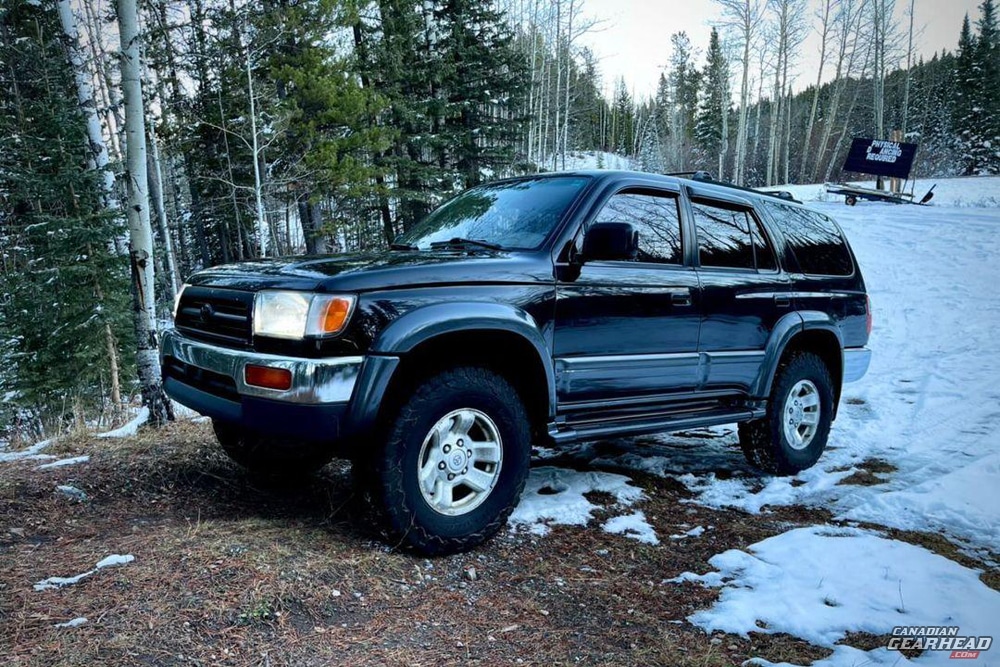
On-Road Performance
The 3rd Generation of 4Runners was made from 1996 to 2002. This model got a totally new look compared to its predecessors. The 1st/2nd Generations were built on truck frames very similar to the Toyota Pickup. In fact, if you look at the front ends of similar year models previous to 1996 you’d think you were looking at the same vehicle.
3rd Generation 4runner Details
1996 brought a true SUV body and frame to the 3rd Generation 4Runner. The interior was more spacious, more comfortable, and more practical. This generation was available with either the 2.7L 3RZ-FE 150 HP 4-banger or a more powerful 3.4 L 5VZ-FE 183 HP V6. Towing capacity remained the same between both engines, 5,000 lbs, but obviously, if you’d be doing more towing you’d want the V6.
MPG can vary anywhere between 16-24 mpg, but will likely be more like 18-20 mpg. The IFS and solid rear axle combo allows for smooth articulation when crawling through rough terrain, but also keeps the 4Runner handling smooth and crisp on the road.
4th Generation 4runner Details
From 2003-2009, the 4th Generation of 4Runners was brought into existence, except this time with a little bit of a twist: an optional 4.7 L V8 generating 245-270 HP depending on the year. On the “lesser” hand, most 4Runners were built with a 4.0L V6 that put out a fair 235-245 HP also depending on the year.
From 2003-04, the V8 models were limited to 245 HP, but from 2005 up until the end of this generation, these engines got a slight bump in HP to 270 HP thanks to the Variable Valve Timing-Intelligence (VVT-i). The same applied to the V6’s, except this bump was much smaller from 235 to 245 HP.
Unlike the 3rd Generation of 4Runners, the 4th Generation actually has a difference in tow capacity between engines. The V8 can pull up to 7,300 lbs whereas the V6 can handle up to 5,000 lbs. The expected MPG can be between 16-23 mpg, but most will see numbers closer to 18-21 mpg across both engines.
Suspension differences
A major difference between the two models is, in some cases, the suspension. X-REAS was introduced to the 4th Generation of 4Runners on the Sport Edition and some Limited models. X-REAS is a system that links all the shocks hydraulically.
This system handled cornering and road bumps very well, but today you will almost never see a 4th Gen with this system installed since they typically wear out between 100k-130k miles. Otherwise, the suspension setup is almost identical to a 3rd gen featuring IFS and solid rear axle.
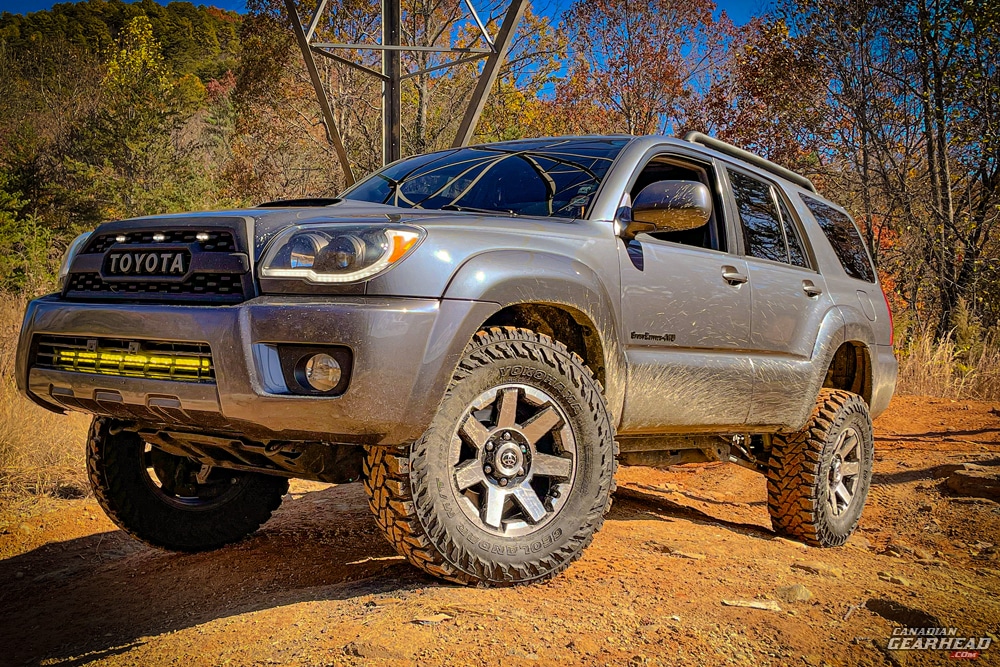
Off-Road Performance
Now that we’ve covered how both generations compare on-road, let’s talk about what you can expect out of your 4Runner once it leaves the pavement.
Wheelbase differences
The 3rd Gen is slightly shorter than the 4th Gen measuring in at approximately 105” compared to 110”, respectively. Long wheelbases are good for stability, whereas shorter ones are better for being nimble.
For example, if you were to take a 2-door jeep and a full-size pickup rock crawling, the pick up is more likely to get high centered on rocks or get stuck trying to get around obstacles compared to the Jeep. The Jeep is more likely to roll over compared to the truck.
It all comes down to where to plan on taking your 4Runner, and while a 5” difference might not seem like much, that might make all the difference in whether or not you get pinned on a rock.
4×4 features
When talking about 4×4 features, there’s a pretty significant difference that sets the 3rd Gen apart from its younger brother: rear lockers. In simplest terms, a locking differential, aka a “locker”, keeps both wheels turning at the same speed at the same time. Without lockers, the vehicle’s computer will send all power to the tire that is easiest to turn.
Unfortunately, Toyota stopped making these lockers standard in 4×4’s from the year 2000 onwards. Starting in 2001, Toyota transitioned entirely over to center lockers which provide 60% of power to the rear axles and 40% to the front. This technology is also seen in the 4×4 4th Gens.
Another big difference between the two generations is how the driver engages 4WD. In the 3rd Gen, the shifter is actually a lever connected directly to the transfer case whereas the 4th Gen has an electronic knob.
As one could assume, there’s a lot more room for something to go wrong with the 4th Gen’s 4×4 system compared to the 3rd Gen and can sometimes be a selling point depending on the buyer.
As we previously talked about, 4th Gen 4×4’s came with a center locker which pushed 60% power to the rear and 40% to the front as well as locked the differentials. Some models also came with Down Hill Acceleration Control (DAC). This can only be used when the vehicle is in 4Lo.
Many people don’t actually use this feature because for one, it sounds like your driveshaft is full of rocks. It also isn’t really necessary in a lot of cases. Since it can only be used when going very slow, most people would rather just use their brakes.
All in all, you cannot go wrong with either generation when it comes to taking your 4Runner off-road; both are just about equally as capable.
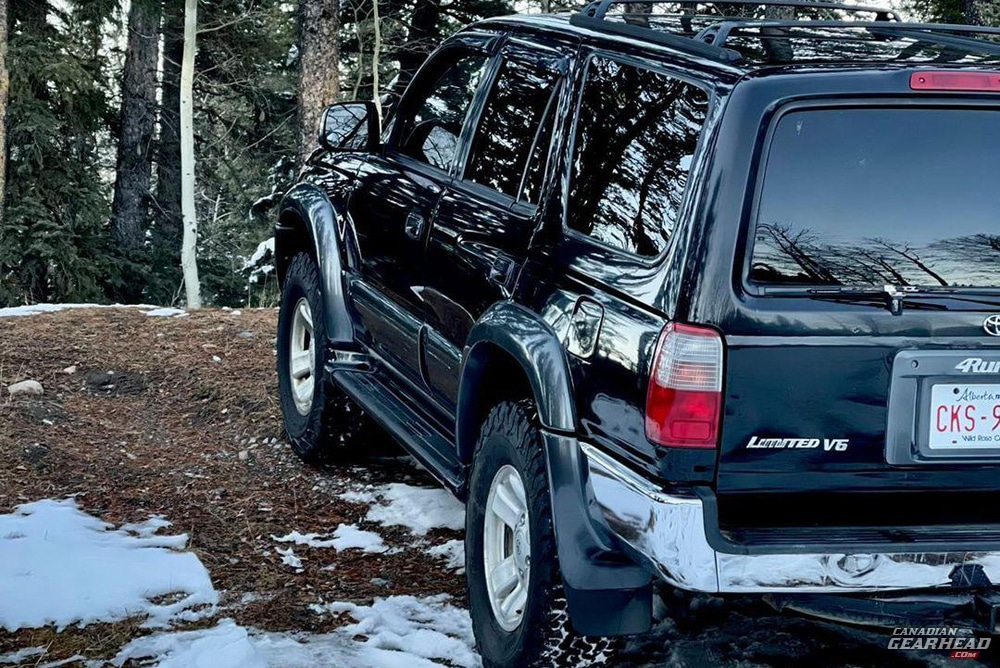
Reliability
Both models are very reliable, therefore the cost of ownership is minimal. However, it all depends on the vehicle’s history. If it has been abused and driven like a rally truck, engines and trannys might need to be replaced. Otherwise, small things like water pumps, alternators, spark plugs, and other regular maintenance items are to be expected.
3rd gen 4runner common problems
When speaking to generation-specific problems, 3rd gen owners can expect to have issues with their rear axle seals, hot running transmission under certain conditions (i.e. fast driving with 37’s and 6” of lift on stock gearing), rusty frames, and the occasional head gasket failure. Otherwise, the 3rd gen is pretty bulletproof.
4th gen 4runner common problems
4th Gen owners can expect to be wary of frame rust, especially if their 4Runner is coming from areas where snow, ice, and salt are prevalent. On the pre-facelift 4th Gens (03-05), V6 head gaskets are known for blowing around 150k miles. This problem was fortunately corrected from 2006 onwards.
Early models would also have cracked dashboards due to sun exposure and heat. This problem was also corrected after the facelift.
The V8s will also typically have cracked exhaust manifolds, or headers, after about 150k-180k. This can be diagnosed if your 4Runner ticks after a cold start, but then goes away after the engine gets up to temperature.
Toyota didn’t intentionally do this; rather, the EPA had standards set in place for emissions and the only way for Toyota engineers to meet this requirement was to reduce the amount of material used in these headers.
After a while, the weight of the catalytic converters will stress the part of the exhaust manifold that bolts directly to the engine block. The easiest thing to do is to order a pair of Doug Thorley headers, or headers of similar quality, and do the swap.
Across both the V6 and V8, 4WD actuators tend to get stuck if not used and the brake calipers also like to stick to the rotors after a certain amount of time. It is essential for 4th Gen owners to use their 4×4 once a month for at least 10 miles to make sure all the gears turn smoothly and the actuator/transfer case doesn’t seize up.
The calipers will get stuck after a while due to rubber brake lines deteriorating and getting into the calipers.
Value (Current and future)
Current prices are way up, but all 4Runners are still selling like hotcakes. With Toyota halting production for a lot of their vehicles due to part and material shortage, used 4Runners are almost more desirable than new ones.
In today’s market, used 4Runner prices are up anywhere from 30-50%, but every now and then you can find a great deal on a quality 3rd or 4th Gen. For the future, mileage will obviously continue to go up, therefore driving the value down – but only slightly.
These vehicles are known for holding their value, so it’s hard to believe that these generations of 4Runners will significantly lose their value. For the V8, the value will remain constant if not increase. 4Runners, like all Toyotas, hold their value very very well because of how reliable they are.
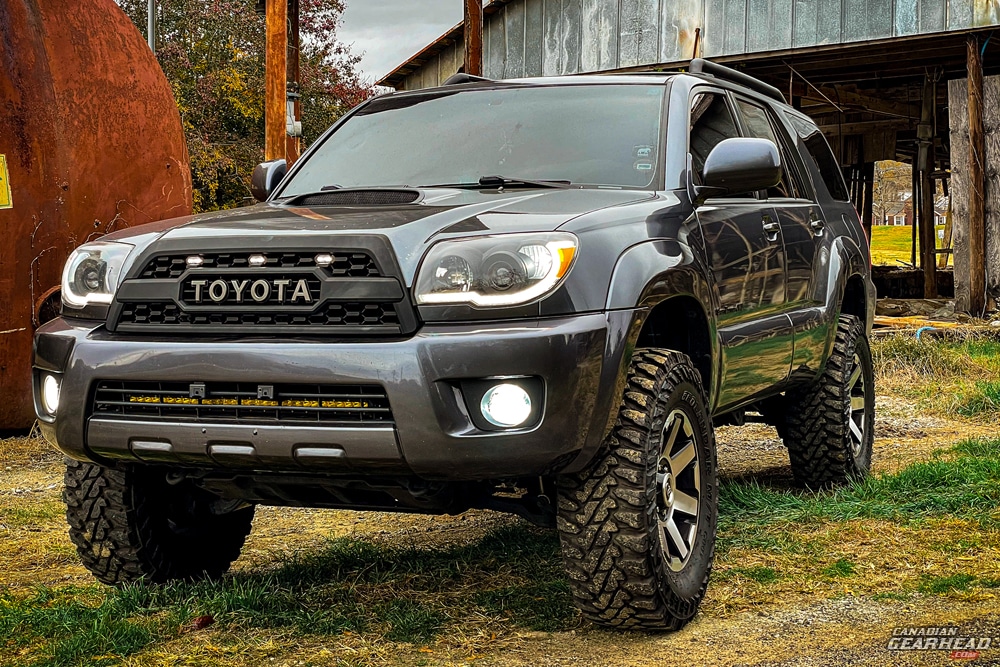
Aftermarket Upgrades
Both models have similar aftermarket support. Nothing will compare to the 5th Gen’s support, but for building a moderate to serious off-road rig the possibilities of modification are only limited to what you’re capable of doing. Some of the more basic modifications you can do to your 3rd/4th Gen include, but are not limited to:
- Headlights
- Bumpers
- Roof Racks
- Suspension Lifts
- Wheels/Tires
- Exhausts
- Aux Lighting
Final Word
At the end of the day, you really cannot go wrong with either generation. It is really all dependent on what you want to do with your vehicle. For being a more serious off-roader, the shorter wheelbase of the 3rd Generation might be for you.
If you plan on dailying your 4Runner and have it see the occasional trail or even towing every so often, 4th Generations might be a better option for you. Like I said, it is up to you to assess what you need your 4Runner to do for you. Hopefully now after reading this article comparing the two, you can be confident in your decision between the 3rd and 4th Generation of 4Runners.

Tim is the creator of Canadian Gearhead. His experience with auto detailing and working for Toyota shows through all of the articles posted here. He runs the Canadian Gearhead site and YouTube channel full-time now and currently owns a 2007 4runner, 2006 Tacoma, and 1991 MR2. Read more about Tim:




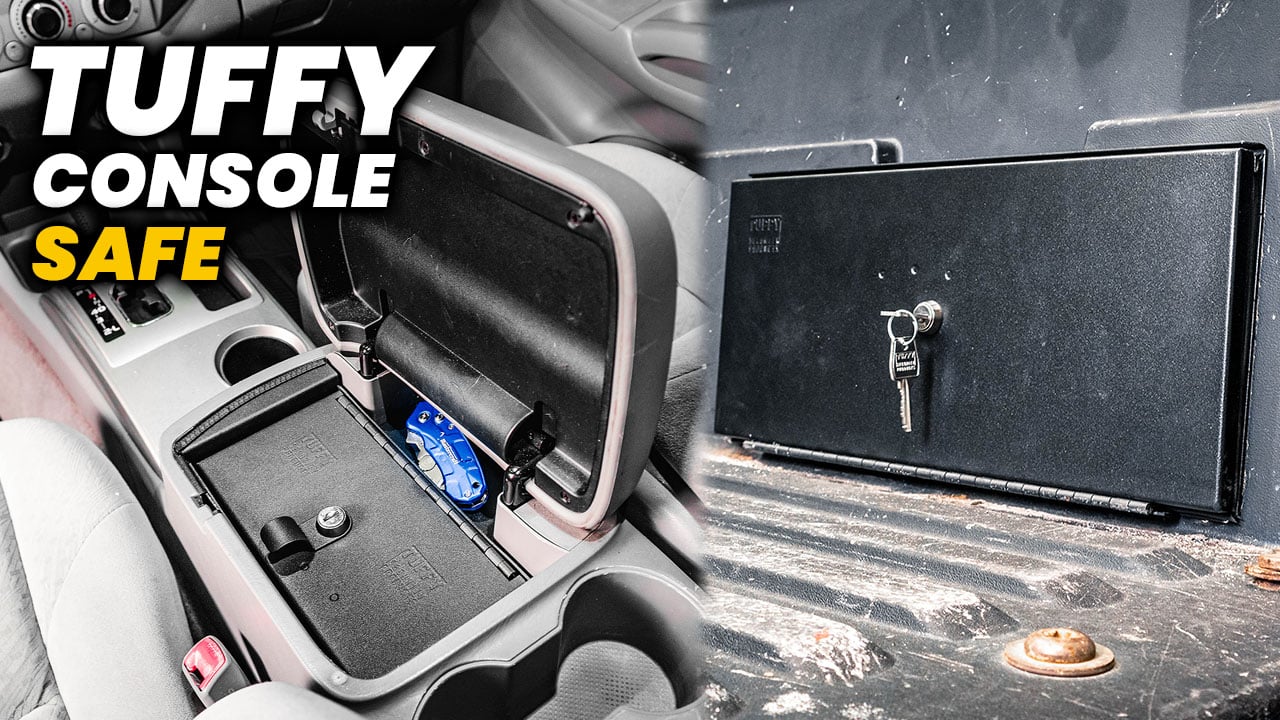
Leave a Reply